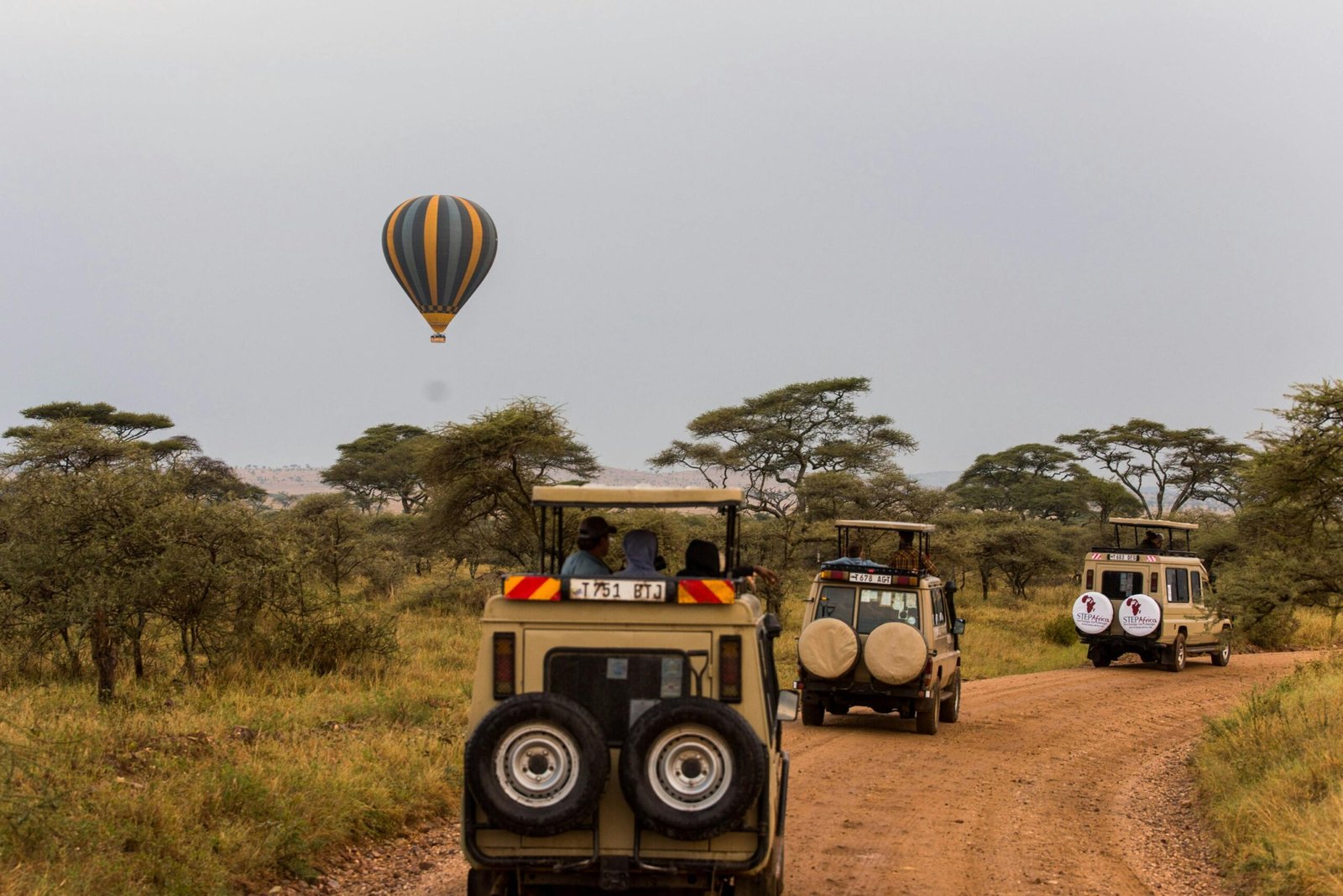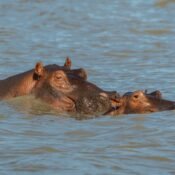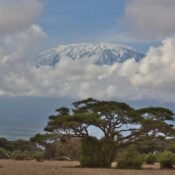
Birdwatcher’s Paradise: Rare Feathered Species in Tarangire & Manyara
When most travelers think of Tanzania, images of lions, elephants, and wildebeest migrations spring to mind. But for bird enthusiasts, Tanzania is equally — if not more — captivating for its incredible avian diversity. Among its many wildlife havens, Tarangire National Park and Lake Manyara National Park stand out as premier birdwatching destinations, hosting an extraordinary array of rare and endemic species that delight seasoned birders and casual nature lovers alike.
A Landscape Shaped for Birdlife
Tarangire National Park is a tapestry of seasonal rivers, ancient baobabs, grassy floodplains, and dense woodlands. The Tarangire River, a lifeline during the dry season, attracts vast numbers of wildlife, including hundreds of bird species that thrive in its varied habitats.
Lake Manyara National Park, in contrast, is defined by its dramatic Rift Valley escarpment, shimmering alkaline lake, lush groundwater forests, and open floodplains. This diversity of landscapes creates microhabitats that support an impressive bird population — over 400 recorded species.
Together, these two parks offer an unbeatable combination for birdwatchers: varied ecosystems, year-round sightings, and a chance to spot some of Africa’s rarest feathered gems.
Rare and Endemic Species of Tarangire
1. Yellow-collared Lovebird (Agapornis personatus)
A true endemic to Tanzania, this small parrot is easily spotted in Tarangire. Its vivid green body, black head, and bright yellow collar make it a favorite among photographers. They often gather in noisy flocks, feeding on grass seeds and perching in acacia trees.
2. Ashy Starling (Lamprotornis unicolor)
Another Tanzanian endemic, the ashy starling is unique to the dry savanna habitats of central and northern Tanzania. Its understated grey plumage contrasts with the iridescent colors of other starlings, but it’s equally captivating to the keen observer.
3. Great White Pelican (Pelecanus onocrotalus)
While pelicans are more commonly associated with coastal regions, the seasonal swamps and rivers in Tarangire draw large flocks of these elegant waterbirds. Watching them glide over reflective waters is a serene experience.
4. Northern Pied Babbler (Turdoides hypoleucus)
A social species often seen in small groups, the northern pied babbler is known for its contrasting black and white plumage and its cooperative breeding behavior, making it a fascinating subject for behavioral observation.
Feathered Wonders of Lake Manyara
1. Lesser Flamingo (Phoeniconaias minor)
Lake Manyara is famous for its vast flocks of flamingos, especially the lesser flamingo. These delicate pink birds gather in the thousands along the soda lake’s shore, feeding on cyanobacteria. Their synchronized movements and vibrant colors create an unforgettable spectacle.
2. Silvery-cheeked Hornbill (Bycanistes brevis)
One of the park’s most charismatic residents, this large hornbill boasts a massive casque atop its bill and striking black-and-white plumage. They’re often seen flying between fig trees in the groundwater forests.
3. Pink-backed Pelican (Pelecanus rufescens)
Slightly smaller than its great white cousin, the pink-backed pelican thrives in Lake Manyara’s wetlands. They can often be seen nesting in large colonies or fishing cooperatively in shallow waters.
4. Crowned Hornbill (Lophoceros alboterminatus)
This species, with its reddish bill and white belly, prefers forested habitats and can often be spotted darting between the dense canopies that line the lake.
Migratory Highlights
Both parks are critical stopovers for migratory birds traveling along the East African flyway. From November to April, birdwatchers can spot European and Asian migrants, such as the Eurasian roller, spotted flycatcher, and white stork. These seasonal visitors add extra excitement for those visiting during the wet months.
Best Times for Birdwatching
- November to April: Peak time for birdwatchers, as resident species are in breeding plumage and migratory species swell the numbers.
- Dry season (June to October): Easier to spot ground-dwelling and water-dependent birds as they congregate near remaining water sources.
While the wet season may present muddy roads and occasional downpours, it rewards patient birders with vibrant landscapes and prolific bird activity.
Birdwatching Tips for Tarangire & Manyara
- Bring Quality Optics – A pair of high-quality binoculars or a spotting scope makes a world of difference for identifying small or distant species.
- Early Morning Excursions – Birds are most active in the early hours, making morning game drives or walks ideal.
- Hire a Local Bird Guide – Their trained eyes and ears can help spot and identify species you might otherwise overlook.
- Stay Patient and Quiet – Birds often reveal themselves after a period of stillness. Your silence can reward you with rare sightings.
- Vary Your Habitats – Explore riverbanks, woodland edges, lake shores, and open plains to maximize species diversity.
The Birding Experience Beyond Sightings
Birdwatching in Tarangire and Manyara is more than just ticking species off a list. It’s about appreciating the intricate behaviors, the melodic calls at dawn, and the delicate balance these birds maintain within the ecosystem. The yellow-collared lovebird’s constant chatter, the flamingo’s synchronized feeding dance, and the hornbill’s powerful wingbeats are as much a part of the experience as the visuals.
Moreover, many bird species act as ecological indicators. Their presence, numbers, and breeding patterns reflect the health of the parks’ ecosystems, making birdwatching not just a hobby but also a valuable conservation tool.
Conservation Efforts
Tanzania’s national parks, including Tarangire and Manyara, are protected areas, but they still face challenges such as climate change, habitat degradation, and human-wildlife conflict. Conservation organizations work alongside park authorities to monitor bird populations, protect nesting sites, and promote eco-tourism practices that benefit both wildlife and local communities.
As a visitor, you can contribute by:
- Choosing eco-friendly lodges.
- Avoiding disturbance to nesting or feeding birds.
- Supporting local conservation projects through donations or volunteering.
Why Tarangire & Manyara Deserve a Spot on Every Birder’s List
Few places in the world offer such concentrated bird diversity in such accessible locations. Whether it’s the endemic species of Tarangire, the spectacle of flamingos at Manyara, or the seasonal arrival of migratory flocks, these parks provide an immersive and rewarding experience for bird enthusiasts.
A single day in either park can yield over a hundred species sightings, but a multi-day visit allows for a deeper connection with the land, the birds, and the rhythms of nature. For those seeking the thrill of discovery, the joy of rare sightings, and the peaceful beauty of avian life, Tarangire and Manyara truly are a birdwatcher’s paradise.




